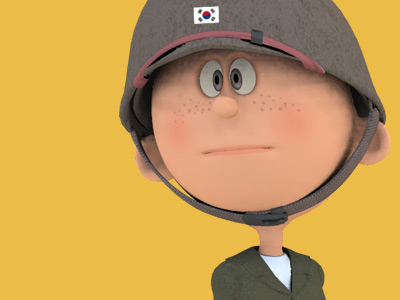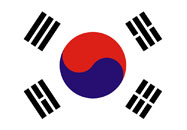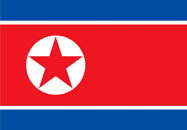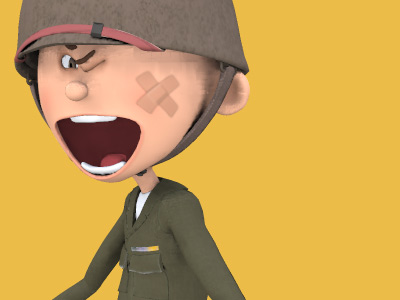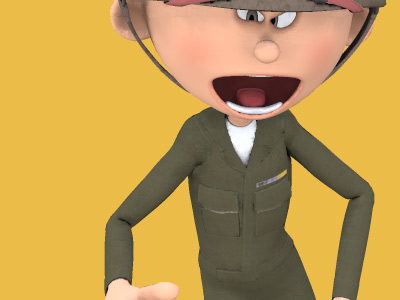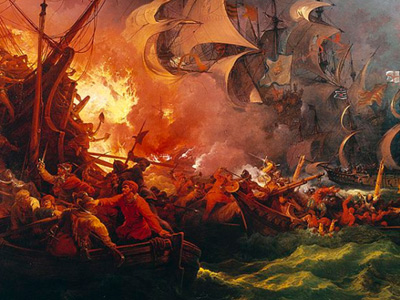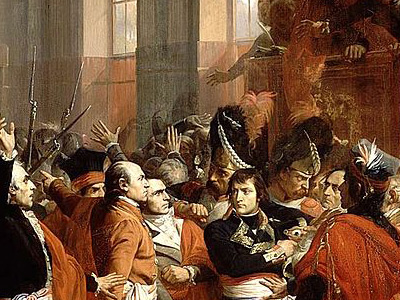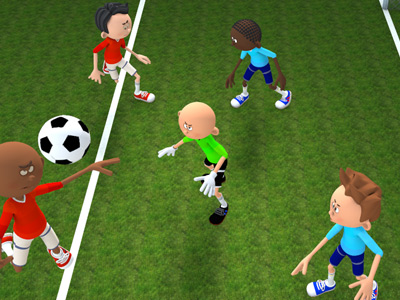Korean War 한국전쟁 (1950-1953)
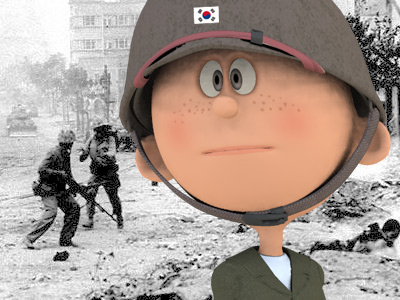
Division of Korea (1954–present)
The Korean Armistice Agreement provided for monitoring by an international commission. Since 1953, the Neutral Nations Supervisory Commission (NNSC), composed of members from the Swiss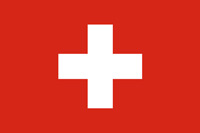 Switzerland, officially the Swiss Confederation, is a landlocked country located at the confluence of Western, Central and Southern Europe. It joined the United Nations only in 2002, though it pursues an active foreign policy, including participation in frequent peace-building processes worldwide. Switzerland is the birthplace of the Red Cross, one of the world's oldest and best-known humanitarian organizations, and hosts the headquarters or offices of most major international institutions. and Swedish Armed Forces, has been stationed near the DMZ.
Switzerland, officially the Swiss Confederation, is a landlocked country located at the confluence of Western, Central and Southern Europe. It joined the United Nations only in 2002, though it pursues an active foreign policy, including participation in frequent peace-building processes worldwide. Switzerland is the birthplace of the Red Cross, one of the world's oldest and best-known humanitarian organizations, and hosts the headquarters or offices of most major international institutions. and Swedish Armed Forces, has been stationed near the DMZ.

UN delegate Lieut. Gen. William K. Harrison, Jr. (seated left), and Korean People’s Army and Chinese People’s Volunteers delegate Gen. Nam Il (seated right) signing the Korean War armistice agreement at P’anmunjŏm, Korea, July 27, 1953.

UN delegate Lieut. Gen. William K. Harrison, Jr. (seated left), and Korean People’s Army and Chinese People’s Volunteers delegate Gen. Nam Il (seated right) signing the Korean War armistice agreement at P’anmunjŏm, Korea, July 27, 1953.
( Click image to enlarge)
In April 1975, South Vietnam's capital was captured by the North Vietnamese army. Encouraged by the success of Communist revolution in Indochina, Kim Il-sung saw it as an opportunity to invade the South. Kim visited China in April of that year, and met with Mao Zedong and Zhou Enlai to ask for military aid. Despite Pyongyang's expectations, however, Beijing refused to help North Korea for another war in Korea.
Since the armistice, there have been numerous incursions and acts of aggression by North Korea North Korea, officially the Democratic People's Republic of Korea (DPRK) is a country in East Asia, in the northern part of the Korean Peninsula. The capital and largest city is Pyongyang. The Korean Demilitarized Zone marks the boundary between North Korea and South Korea. The legitimacy of this border is not accepted by either side, as both states claim to be the legitimate government of the entire peninsula.. In 1976, the axe murder incident was widely publicized. Since 1974, four incursion tunnels leading to Seoul have been uncovered. In 2010, a North Korean submarine torpedoed and sank the South Korean corvette ROKS Cheonan, resulting in the deaths of 46 sailors. Again in 2010, North Korea fired artillery shells on Yeonpyeong island, killing two military personnel and two civilians.
North Korea, officially the Democratic People's Republic of Korea (DPRK) is a country in East Asia, in the northern part of the Korean Peninsula. The capital and largest city is Pyongyang. The Korean Demilitarized Zone marks the boundary between North Korea and South Korea. The legitimacy of this border is not accepted by either side, as both states claim to be the legitimate government of the entire peninsula.. In 1976, the axe murder incident was widely publicized. Since 1974, four incursion tunnels leading to Seoul have been uncovered. In 2010, a North Korean submarine torpedoed and sank the South Korean corvette ROKS Cheonan, resulting in the deaths of 46 sailors. Again in 2010, North Korea fired artillery shells on Yeonpyeong island, killing two military personnel and two civilians.
After a new wave of United Nations (UN)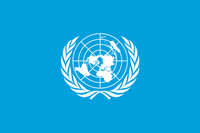 United Nations (UN) is an intergovernmental organization whose stated purposes are to maintain international peace and security, develop friendly relations among nations, achieve international cooperation, and be a centre for harmonizing the actions of nations. The UN was established after World War II with the aim of preventing future world wars, succeeding the League of Nations, which was characterized as ineffective. sanctions, on 11 March 2013, North Korea claimed that it had invalidated the 1953 armistice. On 13 March 2013, North Korea confirmed it ended the 1953 Armistice and declared North Korea "is not restrained by the North-South declaration on non-aggression". On 30 March 2013, North Korea stated that it had entered a "state of war" with South Korea
United Nations (UN) is an intergovernmental organization whose stated purposes are to maintain international peace and security, develop friendly relations among nations, achieve international cooperation, and be a centre for harmonizing the actions of nations. The UN was established after World War II with the aim of preventing future world wars, succeeding the League of Nations, which was characterized as ineffective. sanctions, on 11 March 2013, North Korea claimed that it had invalidated the 1953 armistice. On 13 March 2013, North Korea confirmed it ended the 1953 Armistice and declared North Korea "is not restrained by the North-South declaration on non-aggression". On 30 March 2013, North Korea stated that it had entered a "state of war" with South Korea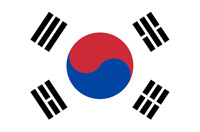 South Korea officially the Republic of Korea (ROK), is a country in East Asia, constituting the southern part of the Korean Peninsula and sharing a land border with North Korea. Since the 21st century, South Korea has been renowned for its globally influential pop culture, particularly in music (K-pop), TV dramas (K-dramas) and cinema, a phenomenon referred to as the Korean wave. and declared that "The long-standing situation of the Korean peninsula being neither at peace nor at war is finally over". Speaking on 4 April 2013, the United States
South Korea officially the Republic of Korea (ROK), is a country in East Asia, constituting the southern part of the Korean Peninsula and sharing a land border with North Korea. Since the 21st century, South Korea has been renowned for its globally influential pop culture, particularly in music (K-pop), TV dramas (K-dramas) and cinema, a phenomenon referred to as the Korean wave. and declared that "The long-standing situation of the Korean peninsula being neither at peace nor at war is finally over". Speaking on 4 April 2013, the United States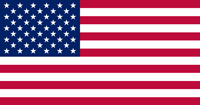 The United States of America (U.S.A. or USA), commonly known as the United States (U.S. or US) or America, is a country in North America. It is the world's third-largest country by both land and total area. The United States shares land borders with Canada to its north and with Mexico to its south. The national capital is Washington, D.C., and the most populous city and financial center is New York City. Secretary of Defense, Chuck Hagel, informed the press that Pyongyang had "formally informed" the Pentagon that it had "ratified" the potential usage of a nuclear weapon against South Korea, Japan and the United States of America, including Guam and Hawaii. Hagel also stated that the United States would deploy the Terminal High Altitude Area Defense anti-ballistic missile system to Guam, because of a credible and realistic nuclear threat from North Korea.
The United States of America (U.S.A. or USA), commonly known as the United States (U.S. or US) or America, is a country in North America. It is the world's third-largest country by both land and total area. The United States shares land borders with Canada to its north and with Mexico to its south. The national capital is Washington, D.C., and the most populous city and financial center is New York City. Secretary of Defense, Chuck Hagel, informed the press that Pyongyang had "formally informed" the Pentagon that it had "ratified" the potential usage of a nuclear weapon against South Korea, Japan and the United States of America, including Guam and Hawaii. Hagel also stated that the United States would deploy the Terminal High Altitude Area Defense anti-ballistic missile system to Guam, because of a credible and realistic nuclear threat from North Korea.
In 2016, it was revealed that North Korea approached the United States about conducting formal peace talks to formally end the war. While the White House agreed to secret peace talks, the plan was rejected due to the country's refusal to discuss nuclear disarmament as part of the terms of the treaty. Any possibility of talks ended on 6 January when they conducted their fourth nuclear test.
HISTORY
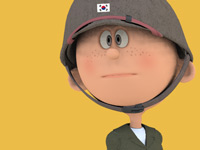
RESOURCES
This article uses material from the Wikipedia article "Korean War", which is released under the Creative Commons Attribution-Share-Alike License 3.0.
© Stories Preschool. All Rights Reserved.
